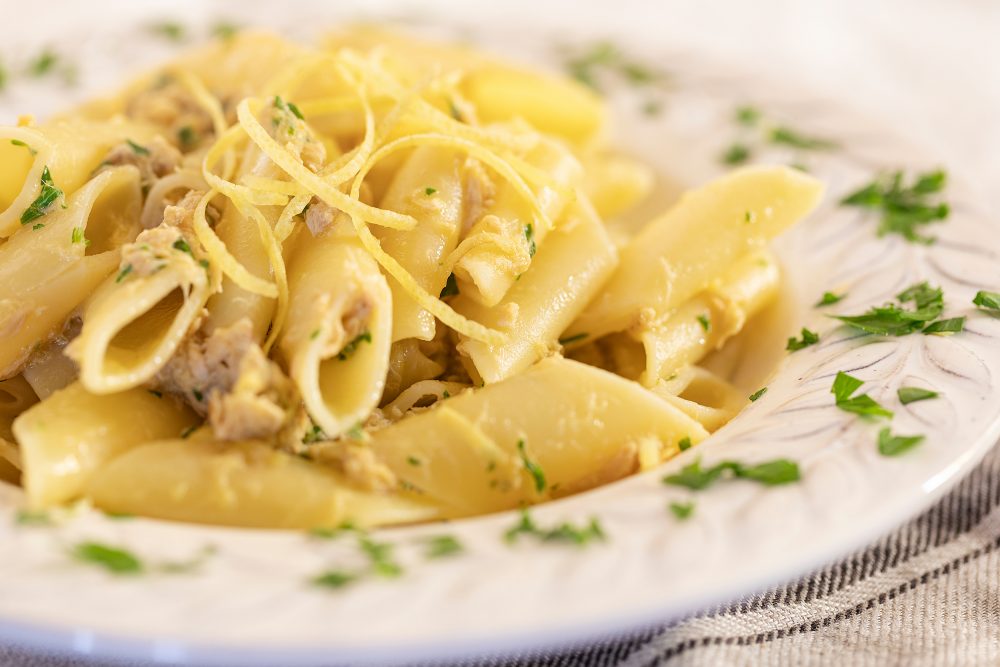With over 10,000 reported cases of the Coronavirus, Italy now has the second highest number of infections in the world after China. To prepare for what is now a country-wide lockdown—including travel restrictions, school closures and most recently the closures of bars and restaurants—Italians have been clearing out supermarkets to stockpile food at home. Photos of bare shelves have been following suit.
But a tweet that went viral on February 23 revealed one food that didn’t make the cut: smooth penne, or penne lisce.
Continuo a guardare questa foto fatta prima al supermercato e penso al fatto che il grande sconfitto da questo virus sono le penne lisce che agli italiani fanno cagare pure quando sono presi dal panico e si preparano all’apocalisse. pic.twitter.com/Lq9Y06jdho
— 𝚍𝚒𝚘𝚍𝚎𝚐𝚕𝚒𝚣𝚒𝚕𝚕𝚊 🤦♂️ (@diodeglizilla) February 23, 2020
Photos showing similar scenes—empty shelves with only boxes of smooth penne left behind—started circulating, as did the hashtag #pennelisce.
We couldn’t help but wonder what was up. The thinking goes that because of its texture, ridged penne holds sauce better than smooth. But defenders of penne lisce were quick to point out that if the pasta is high quality—that is, made with durum wheat flour and extruded through bronze dies—it should be coarse enough for sauce to cling. It should also be dried slowly, which allows the noodle to retain its porous structure, better for absorbing sauce.
Explaining the distinction to Quartz, professor of history at the university of Bologna Alberto De Bernardi, who has penned a book on the social history of pasta, said that ridged pasta is cheaper to produce and less prone to overcooking. But it’s effectively “a dead pasta,” he said.
In Vanity Fair Italy, Michelin-starred Italian chef Gennaro Esposito called ridged pasta “the apex of weak thought.”
At Milk Street, we use both ridged and smooth pasta, because we know sauce will stick to pasta lisce—the original style, Espostito says—as well as it will to textured. That’s because we follow a method for getting sauce to cling to noodles, no matter the texture. It all boils down to the pasta water.
From our travels to Rome to learn the ancient city’s traditional pastas, we learned that less is more. Using a smaller volume of water—think just two to four quarts—leaves a higher concentration of starch in the cooking water. When mixed into a sauce, that starchy pasta water yields a silky sauce that better coats the noodles. We use this principle in our Pasta All’Amatriciana, as well as our Spaghetti Puttanesca and Spaghetti Al Limone, and it would work just as well on smooth penne.
(If you happen to toss your pasta water by accident, or if you’re using gluten-free pasta that doesn’t produce as much starch, you can add ¼ teaspoon each cornstarch and kosher salt to every 1 cup water to achieve similar results.)
According to De Cecco—who weighed in on #pennelisce with a tweet of its own to defend its penne as bronze-extruded—smooth penne goes best with meat sauces, such as ragú bolognese (try our recipe) or thicker vegetable-based sauces.
Whatever sauce you choose, if you’re doing any stockpiling of your own, consider smooth pasta as well as ridged. Remember that smooth pasta should be high quality and rough enough to hold sauce well, and that adding starchy pasta water to your sauce will help, well, smooth things over.
h/t Quartz; This Is Mold
Photo credit: Shutterstock/coffeeflavour




